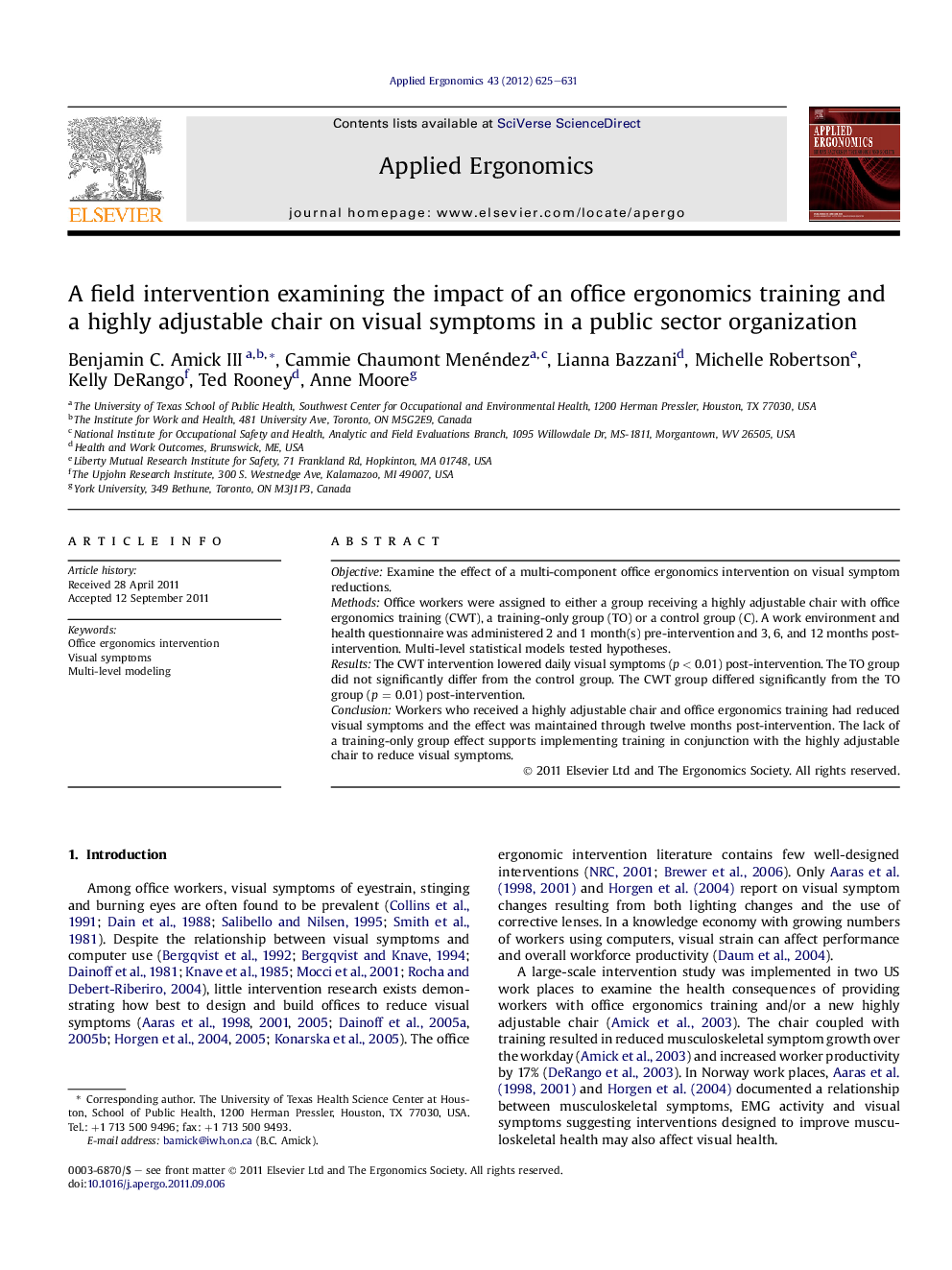| Article ID | Journal | Published Year | Pages | File Type |
|---|---|---|---|---|
| 548752 | Applied Ergonomics | 2012 | 7 Pages |
ObjectiveExamine the effect of a multi-component office ergonomics intervention on visual symptom reductions.MethodsOffice workers were assigned to either a group receiving a highly adjustable chair with office ergonomics training (CWT), a training-only group (TO) or a control group (C). A work environment and health questionnaire was administered 2 and 1 month(s) pre-intervention and 3, 6, and 12 months post-intervention. Multi-level statistical models tested hypotheses.ResultsThe CWT intervention lowered daily visual symptoms (p < 0.01) post-intervention. The TO group did not significantly differ from the control group. The CWT group differed significantly from the TO group (p = 0.01) post-intervention.ConclusionWorkers who received a highly adjustable chair and office ergonomics training had reduced visual symptoms and the effect was maintained through twelve months post-intervention. The lack of a training-only group effect supports implementing training in conjunction with the highly adjustable chair to reduce visual symptoms.
► There remains little intervention research on how to improve visual health. ► A highly adjustable chair with an office ergonomics training reduced visual symptoms. ► Symptom reduction was maintained through 12 months of follow-up. ► Office ergonomics training alone did not reduce visual symptoms. ► There is a need for replication studies.
